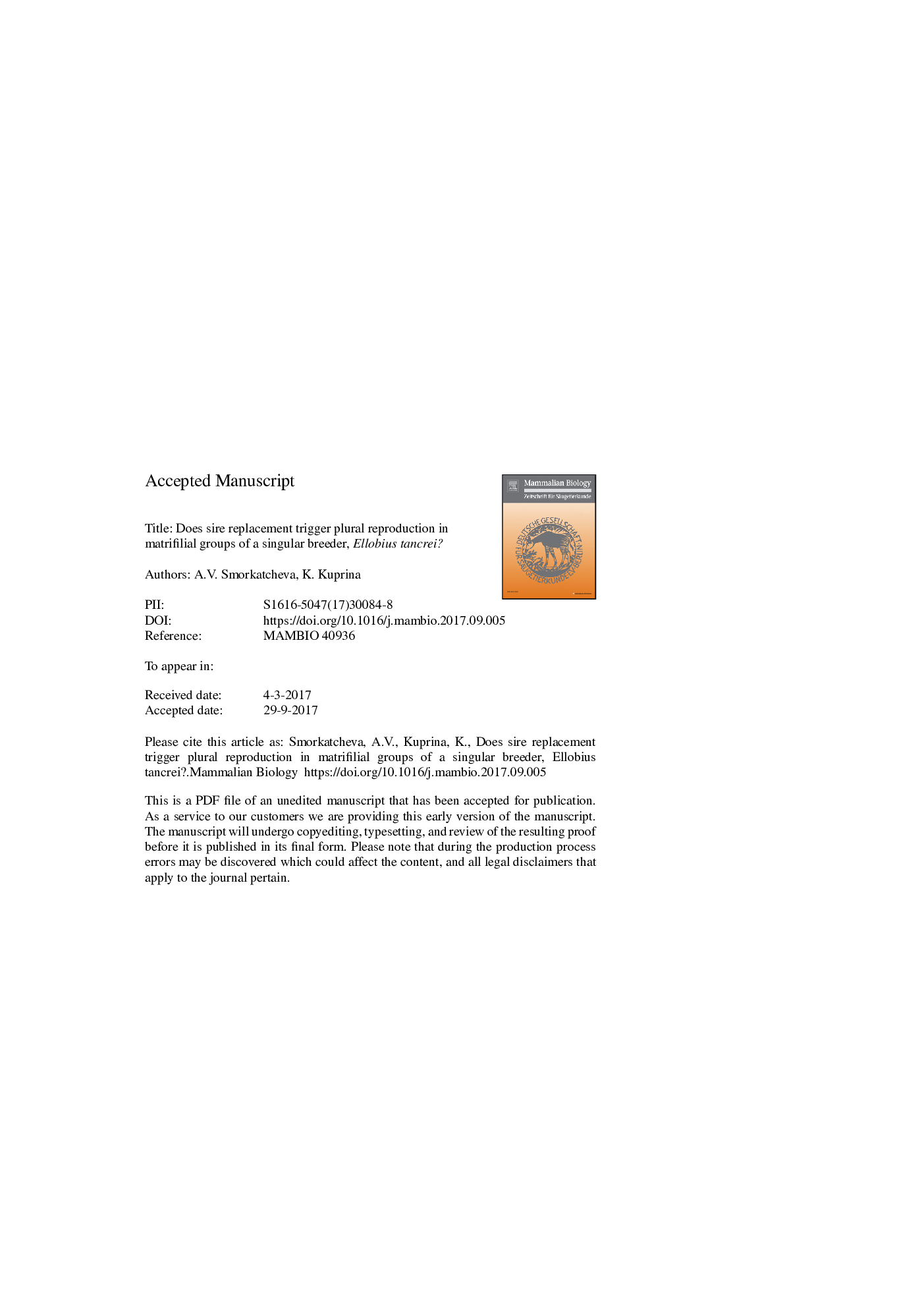| کد مقاله | کد نشریه | سال انتشار | مقاله انگلیسی | نسخه تمام متن |
|---|---|---|---|---|
| 8475787 | 1550459 | 2018 | 26 صفحه PDF | دانلود رایگان |
عنوان انگلیسی مقاله ISI
Does sire replacement trigger plural reproduction in matrifilial groups of a singular breeder, Ellobius tancrei?
دانلود مقاله + سفارش ترجمه
دانلود مقاله ISI انگلیسی
رایگان برای ایرانیان
موضوعات مرتبط
علوم زیستی و بیوفناوری
علوم کشاورزی و بیولوژیک
علوم دامی و جانورشناسی
پیش نمایش صفحه اول مقاله

چکیده انگلیسی
Group-living species differ in how the reproduction is shared among same-sex individuals and how the reproductive skew is attained. In mammals, the highest level of reproductive skew among females is known for some social African mole-rats. Mole voles (Ellobius, Arvicolinae) are similar to these well-studied subterranean rodents in both ecological specialization and social structure. At present, there is no information about the proximate mechanisms underlying singular breeding in any Ellobius species. In this study of the Zaisan mole voles, E. tancrei, we tested the mother's influence on reproduction and survival of the young females exposed to an unrelated mate. Nine of 15 daughters housed in pairs bred, and all pairs persisted until the end of the experiment (6 months). The reproduction in the matrifilial trios (n = 12) was skewed towards mothers: only one daughter delivered but did not wean the litter. The latency until conception was significantly longer in paired daughters than in mothers from trios. Thus, the reproductive skew in trios may be initially generated by the age or experience difference rather than dominance asymmetry. Only 4 trios persisted for 6 months due to high female mortality. The heavier and older was a mother, and the younger was a daughter at male introduction, the more stable was the trio. The influence of females' ages on group tenacity may be mediated by the daughter's age-related reproductive activation. The despotic reproductive monopoly with extreme intolerance between kin reproductive females is unusual for voles and indicates a strong female-female competition in E. tancrei in nature.
ناشر
Database: Elsevier - ScienceDirect (ساینس دایرکت)
Journal: Mammalian Biology - Volume 88, January 2018, Pages 144-150
Journal: Mammalian Biology - Volume 88, January 2018, Pages 144-150
نویسندگان
Antonina V. Smorkatcheva, Kristina V. Kuprina,